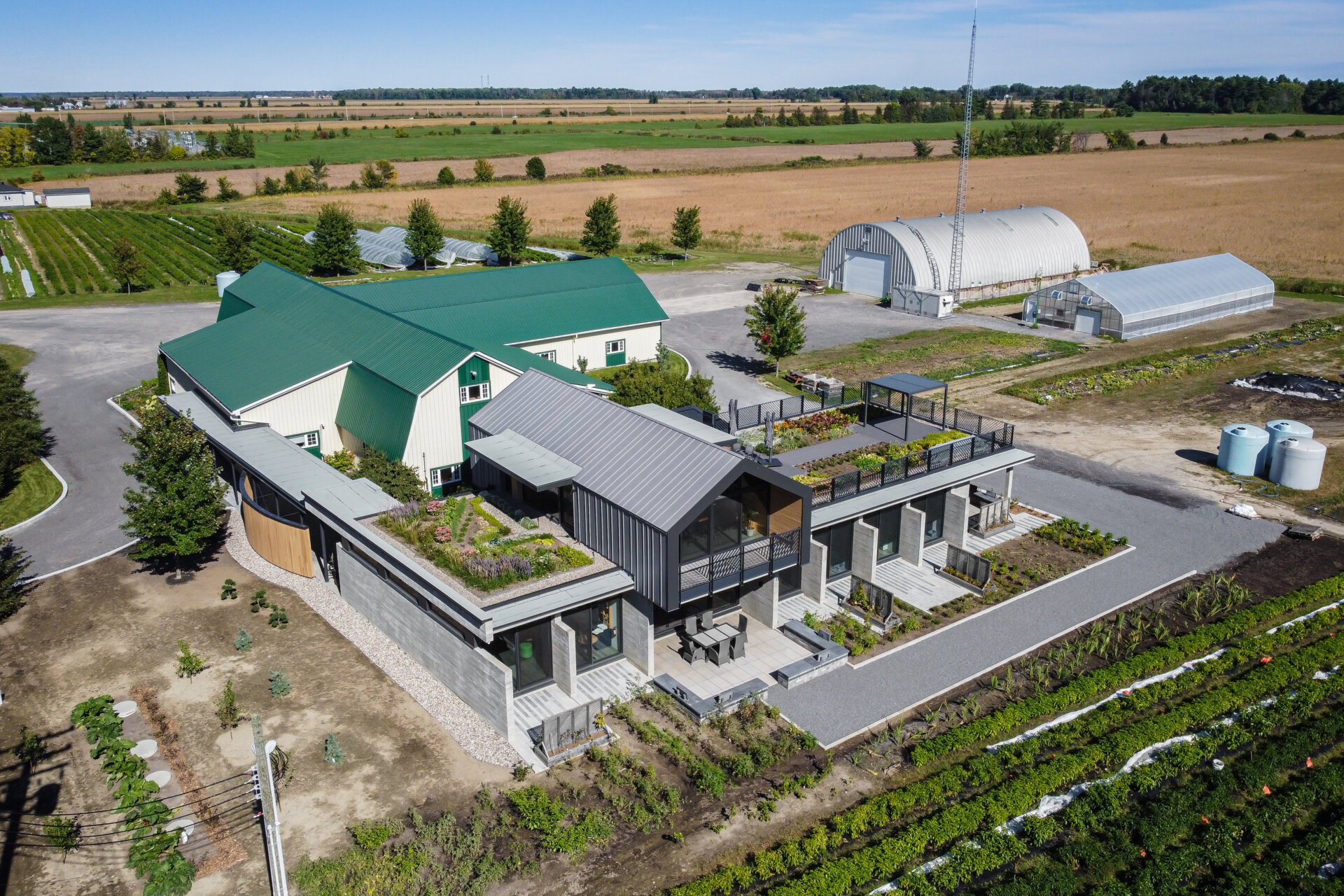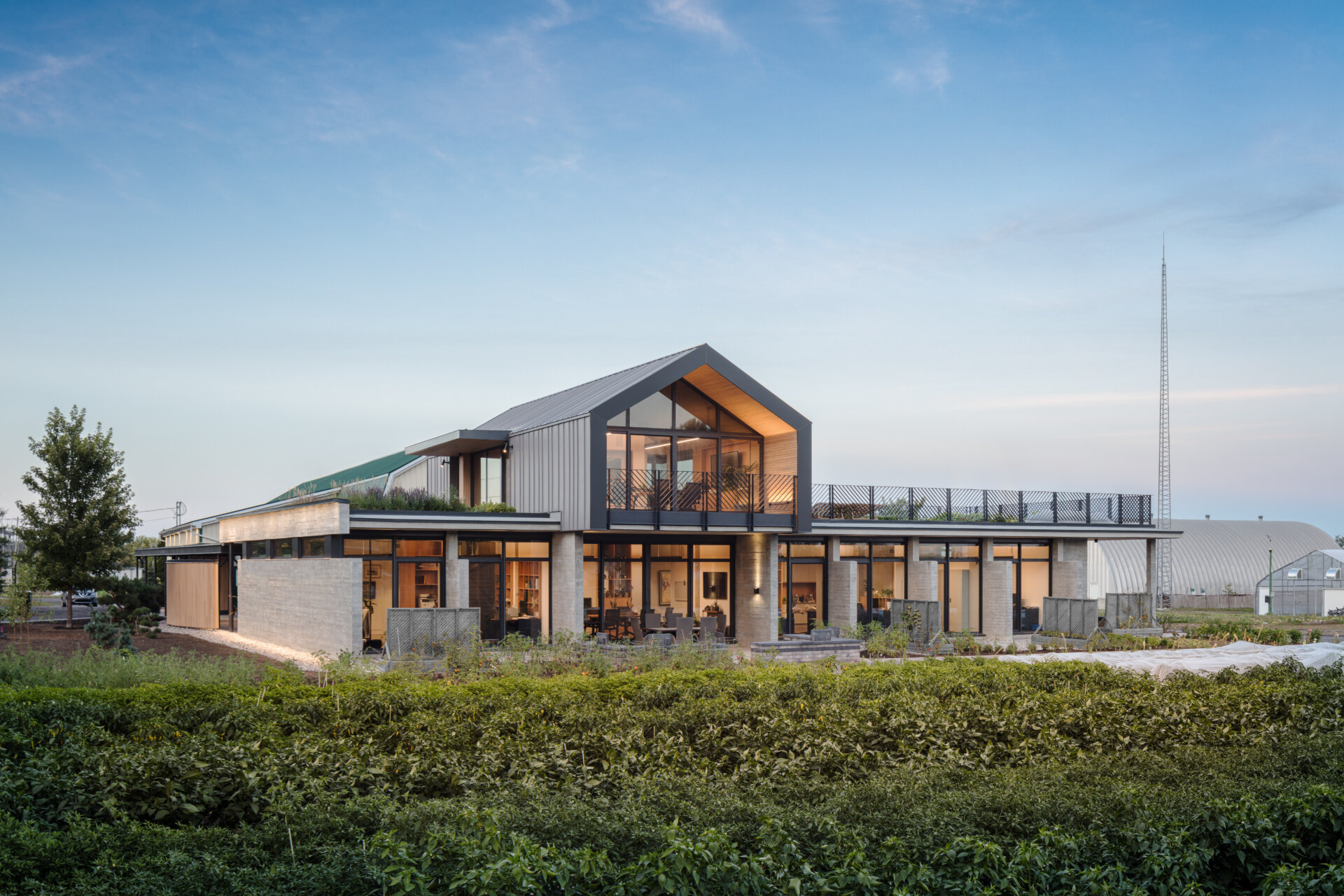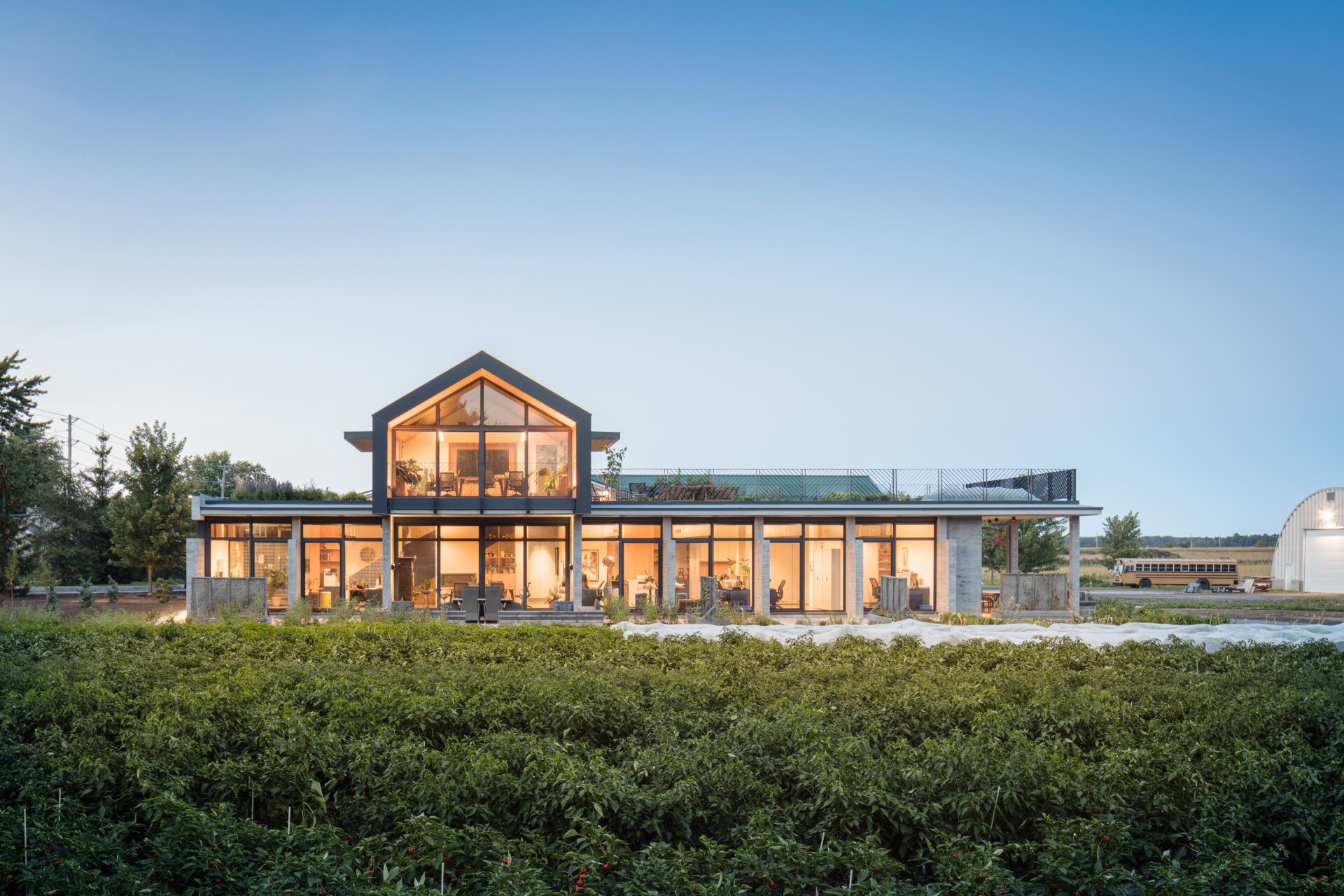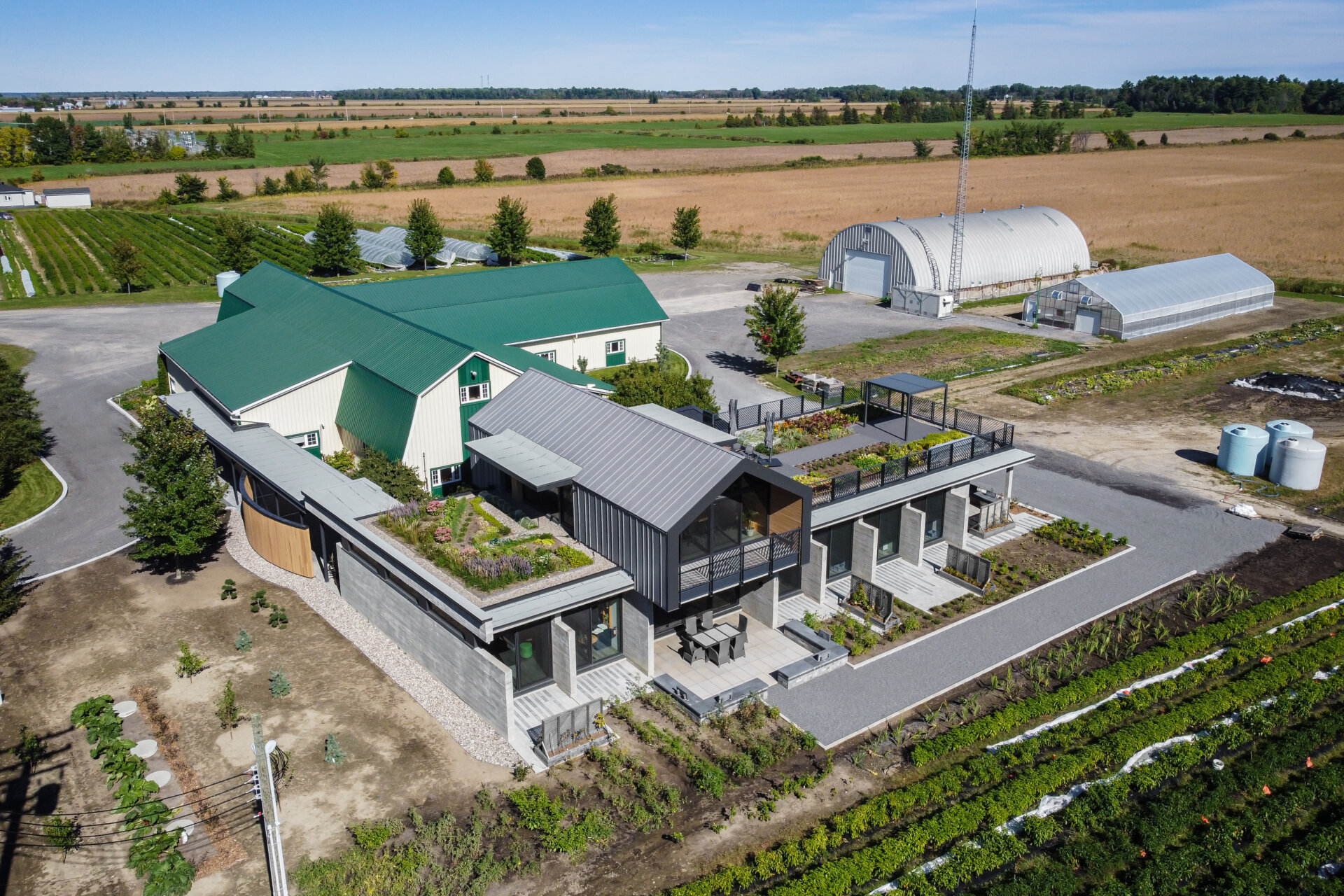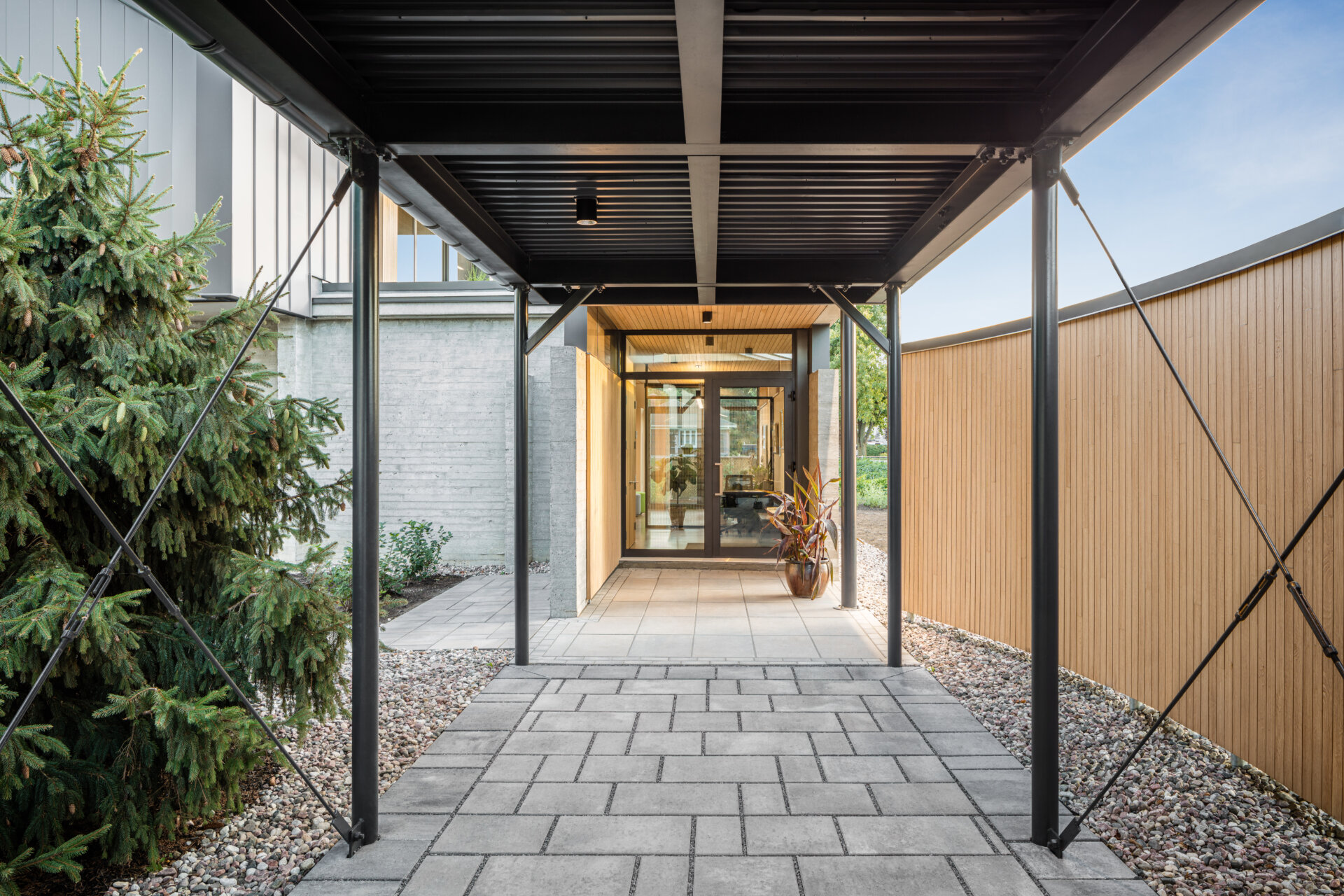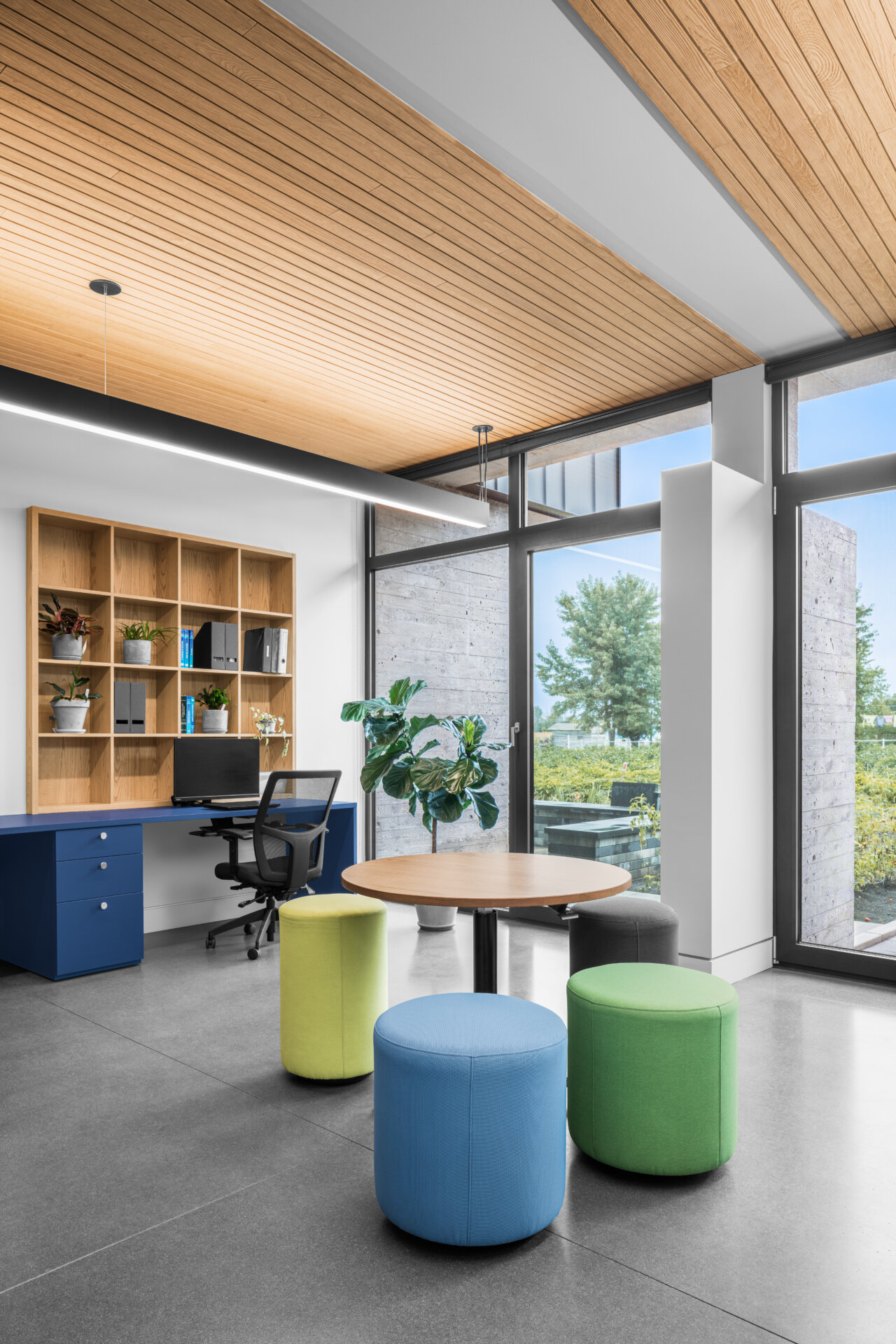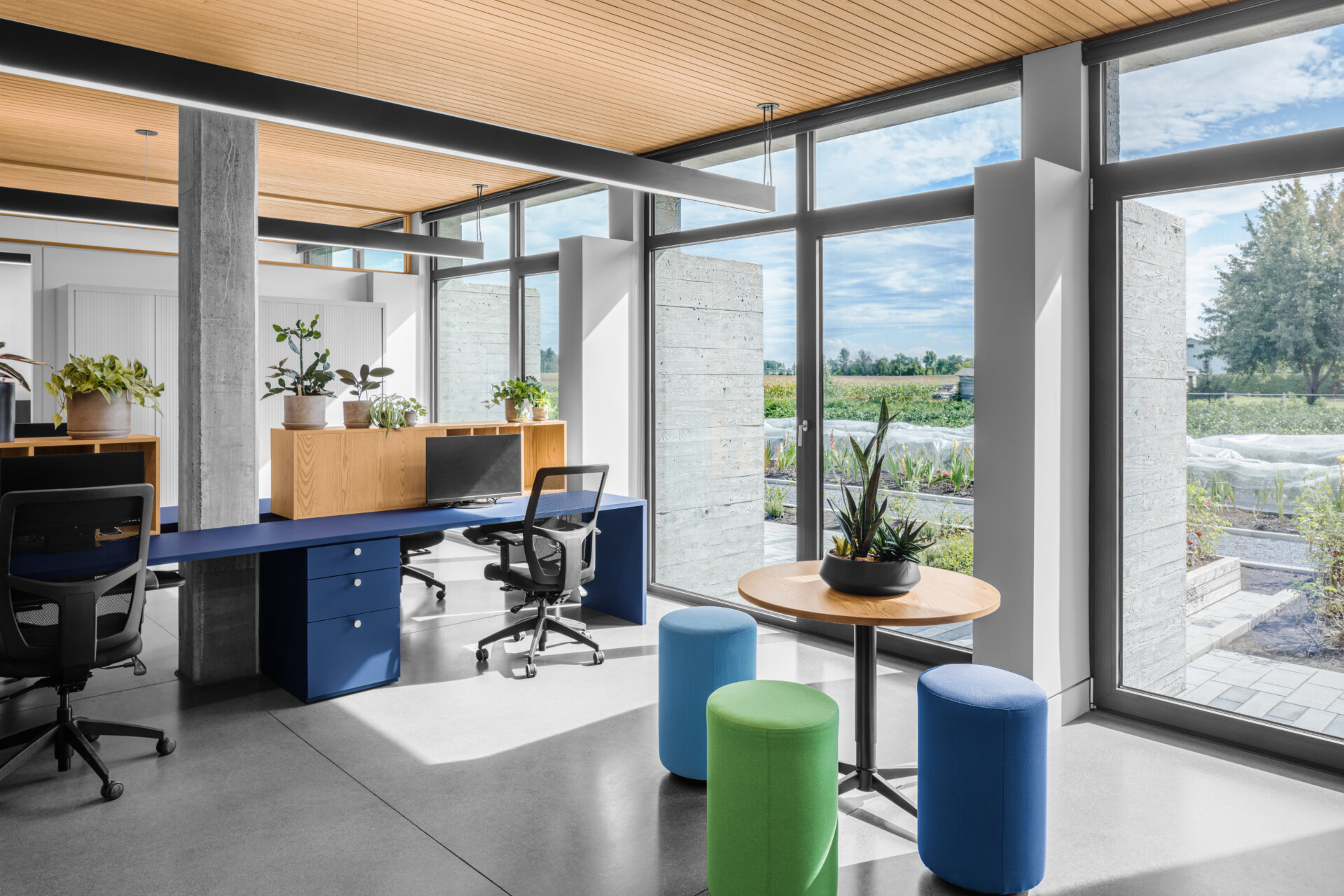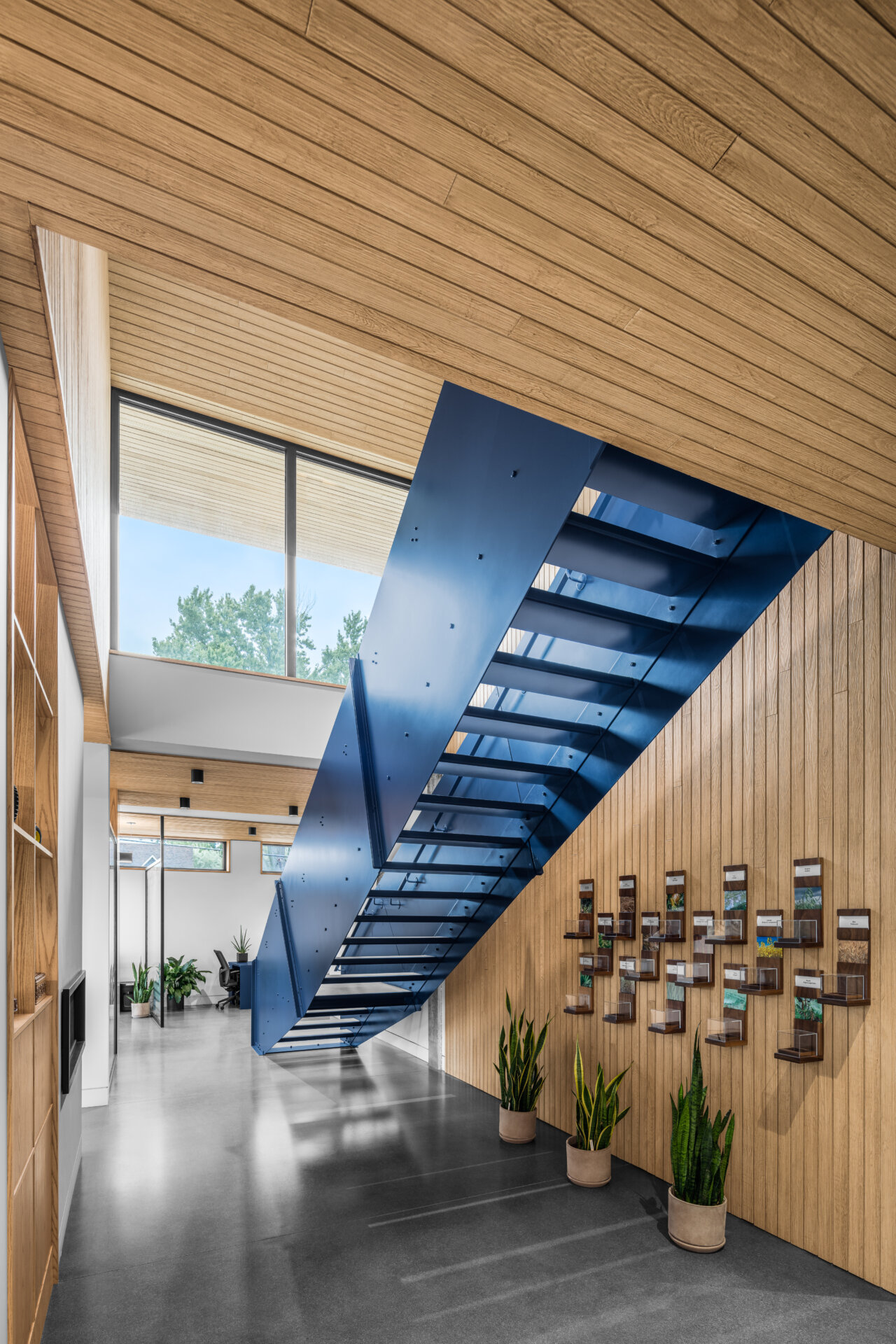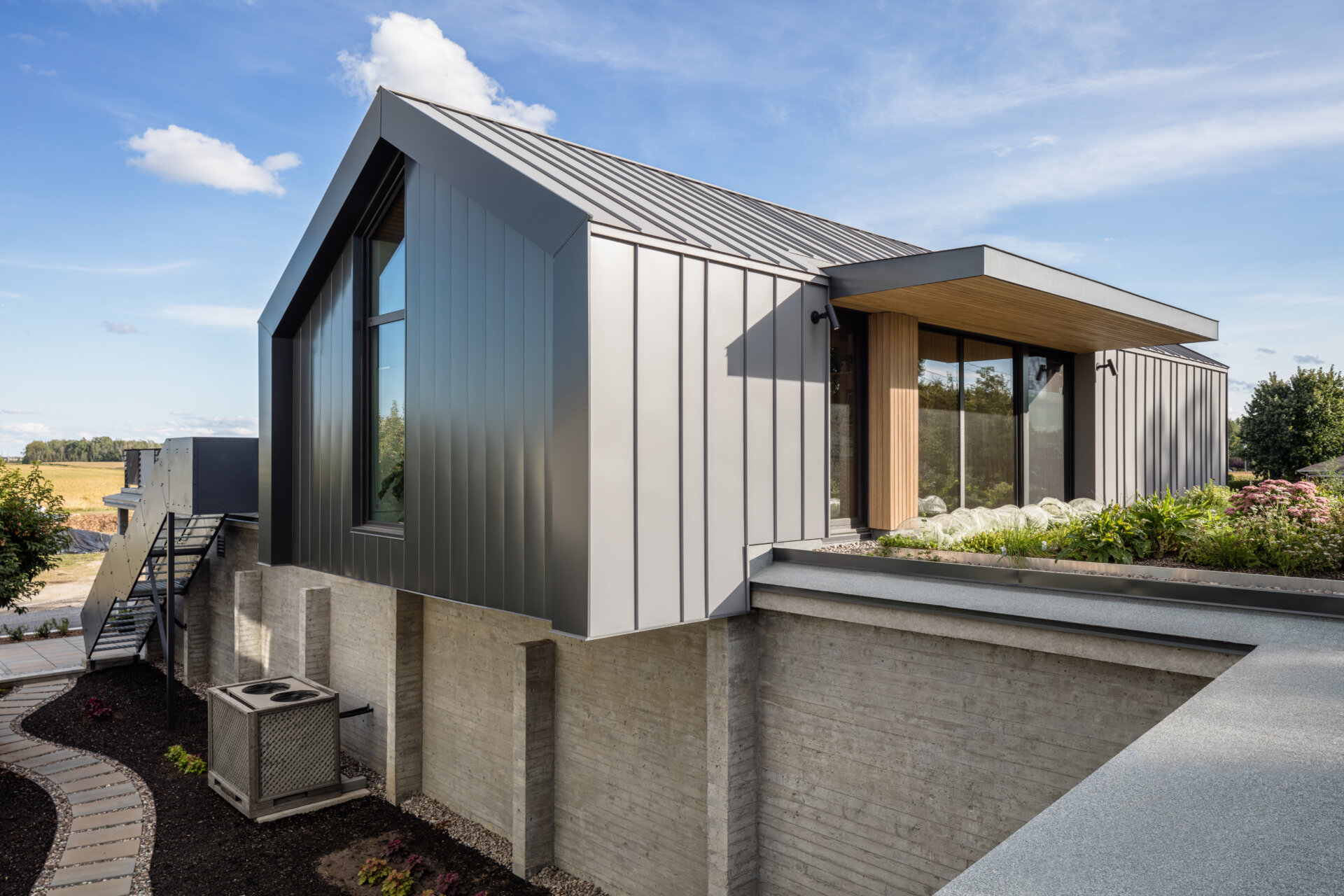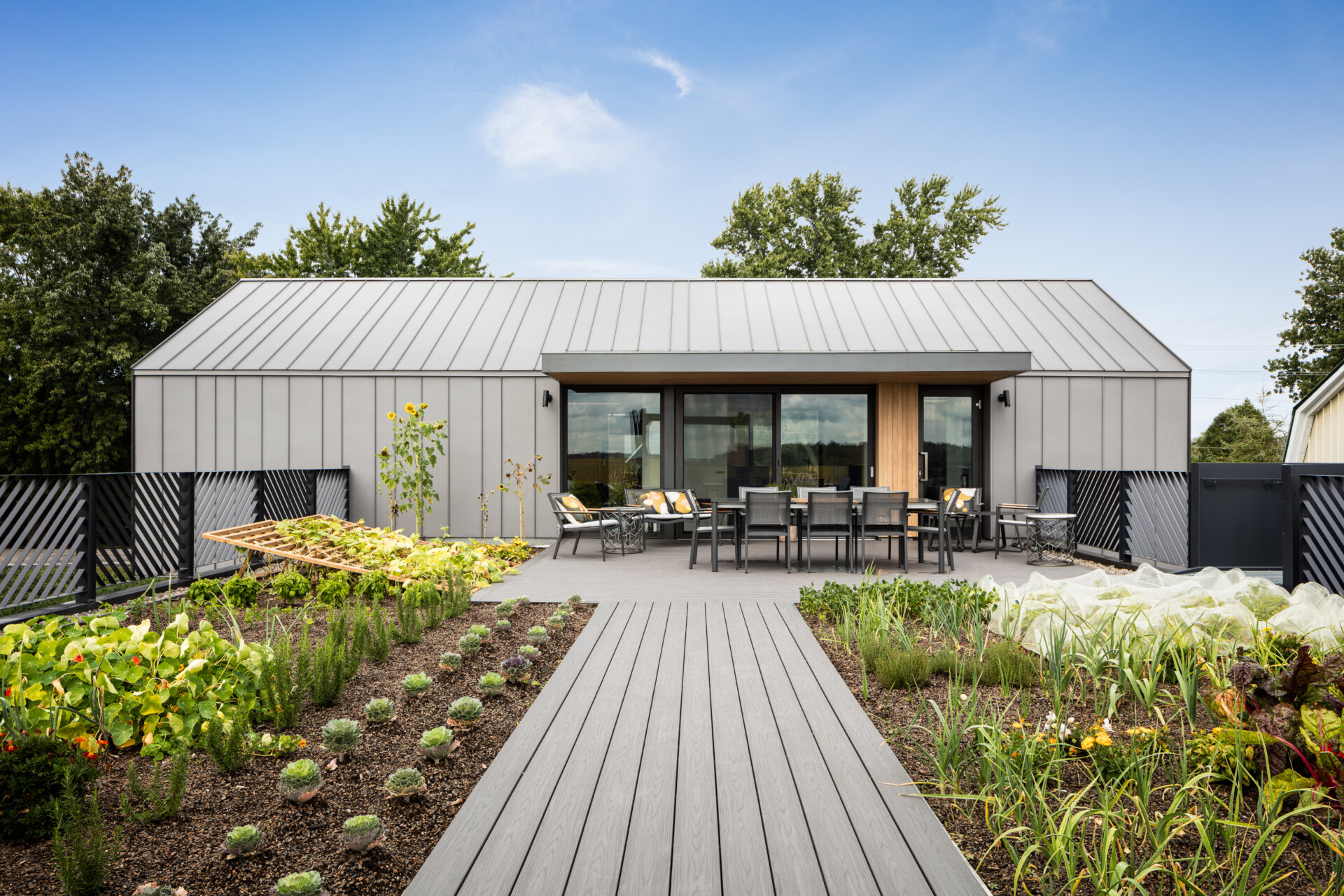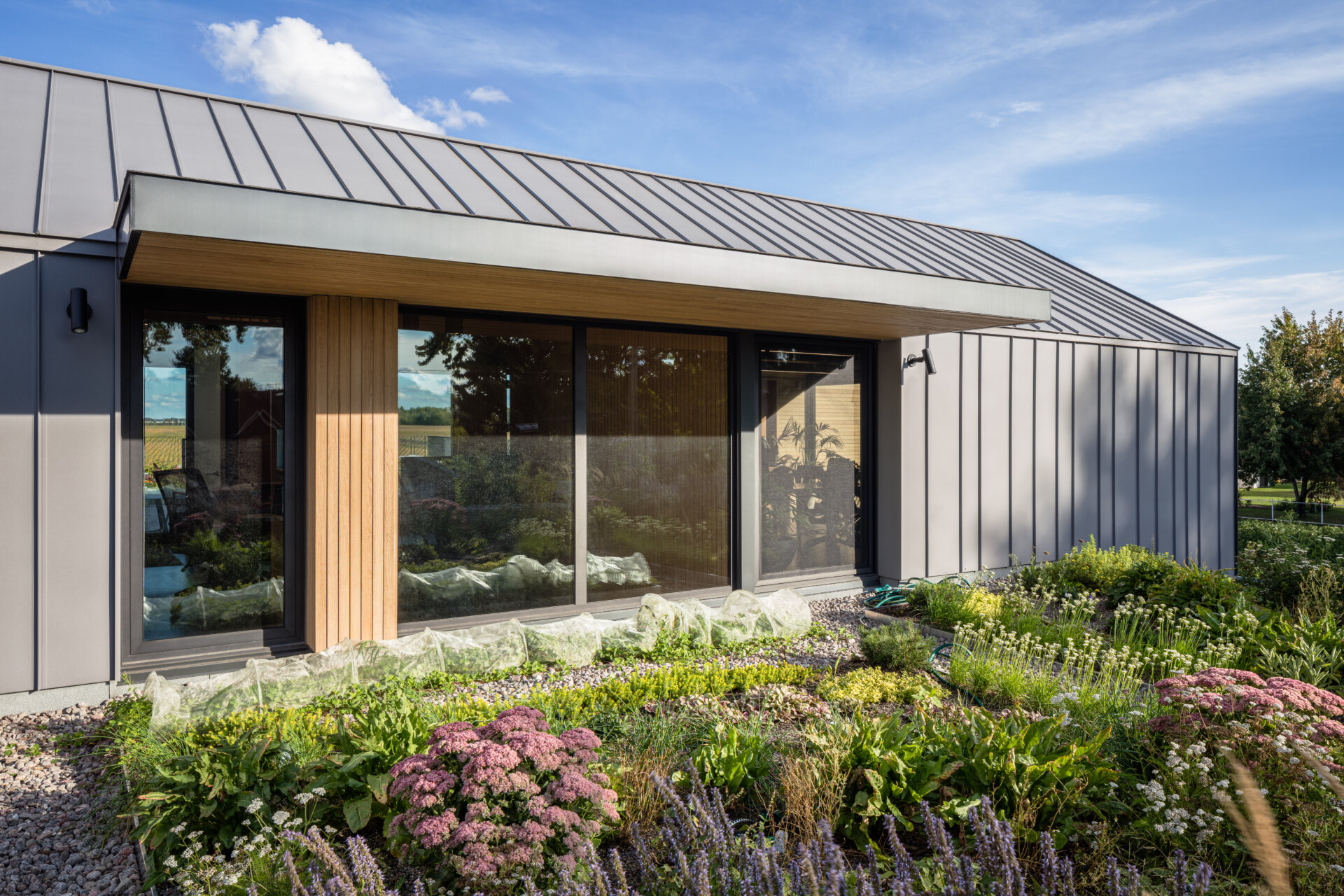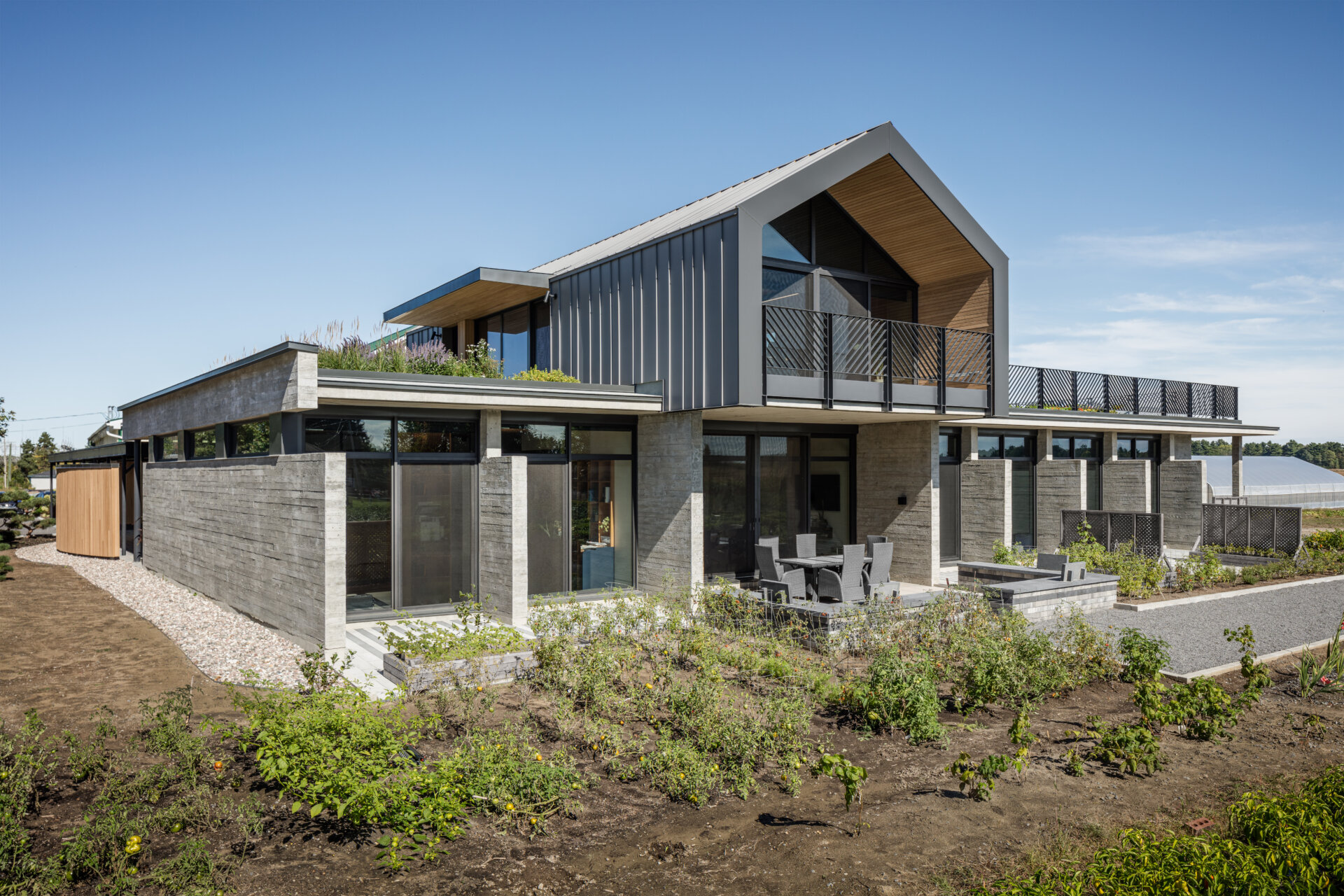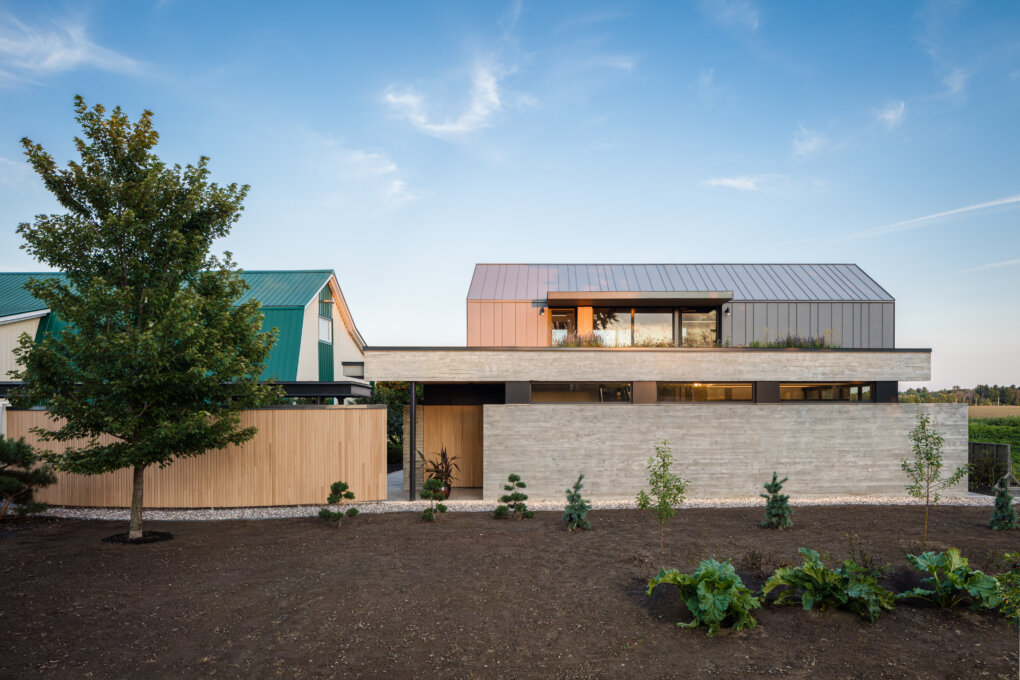
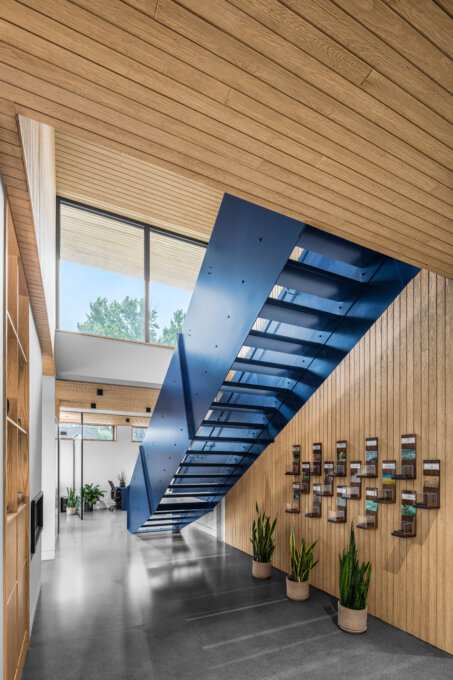


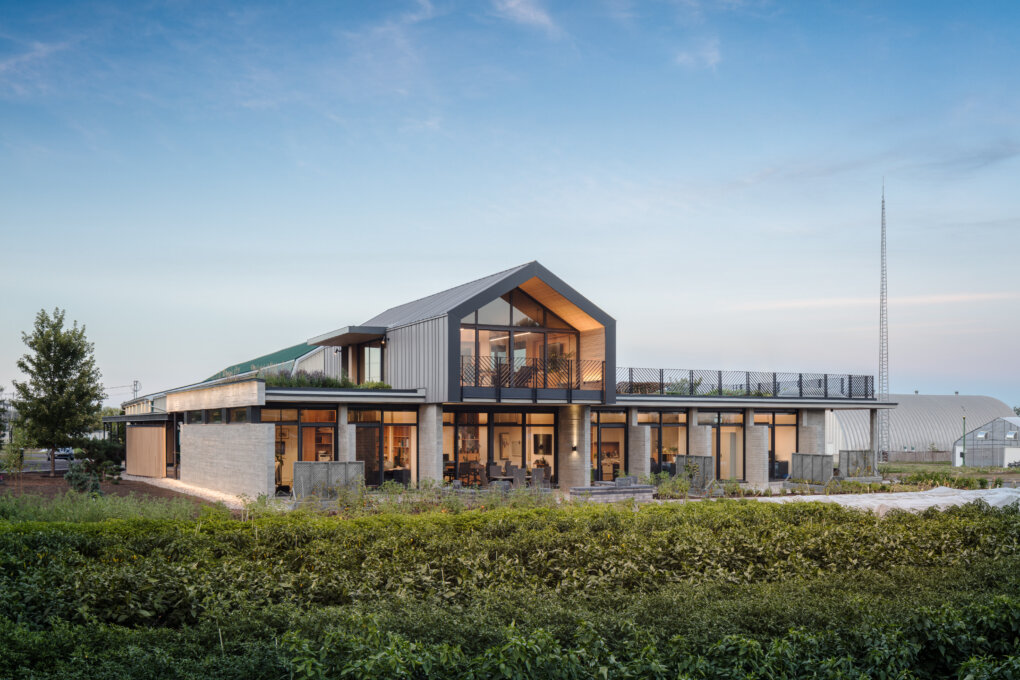



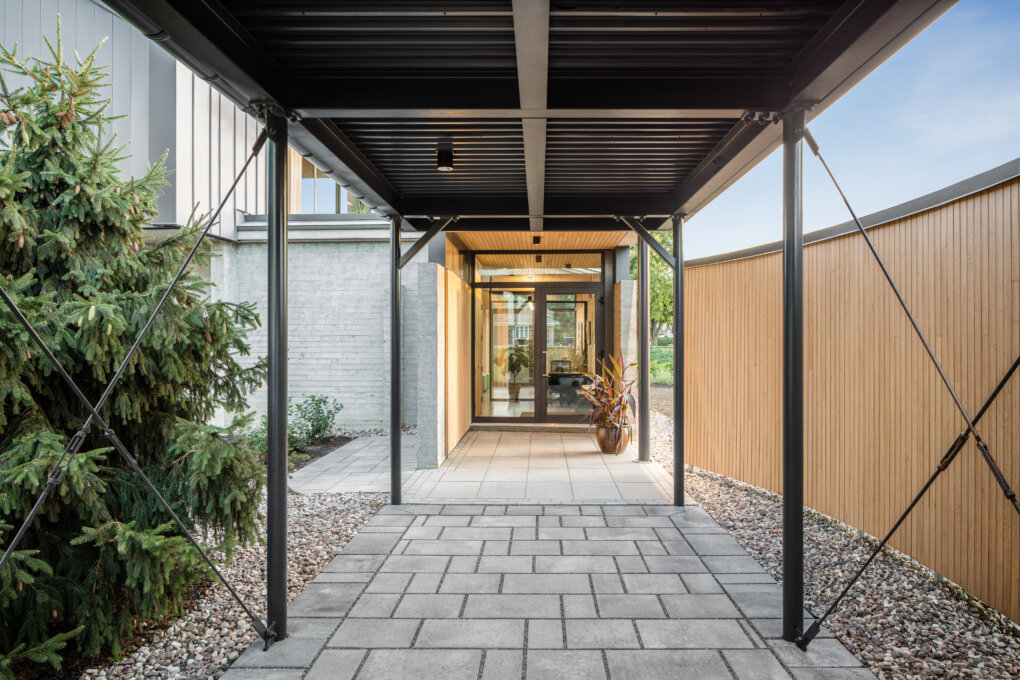

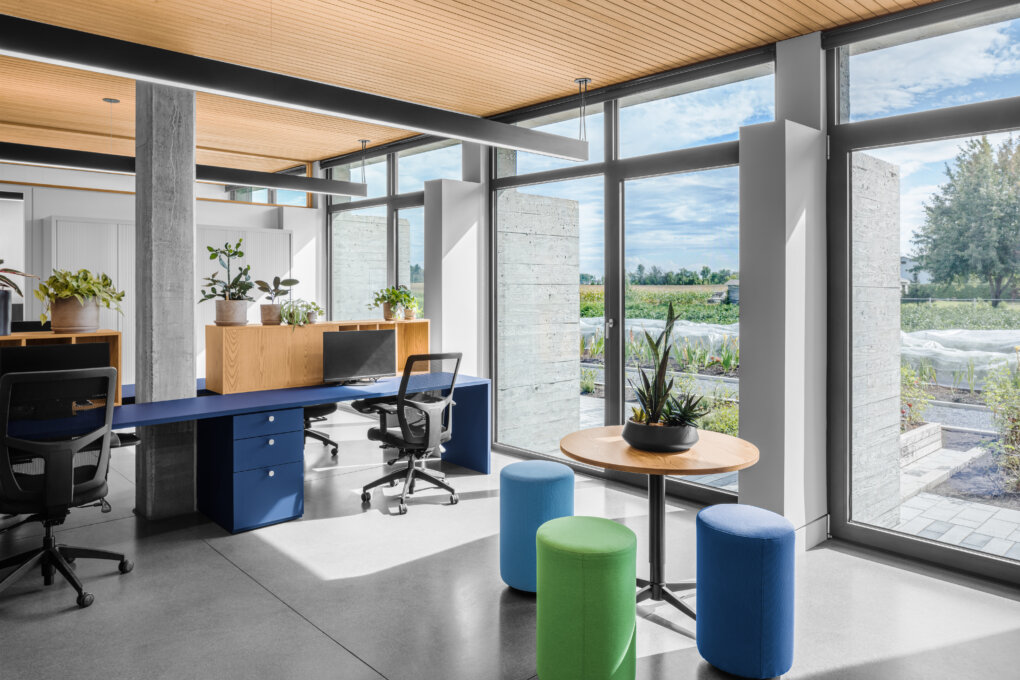
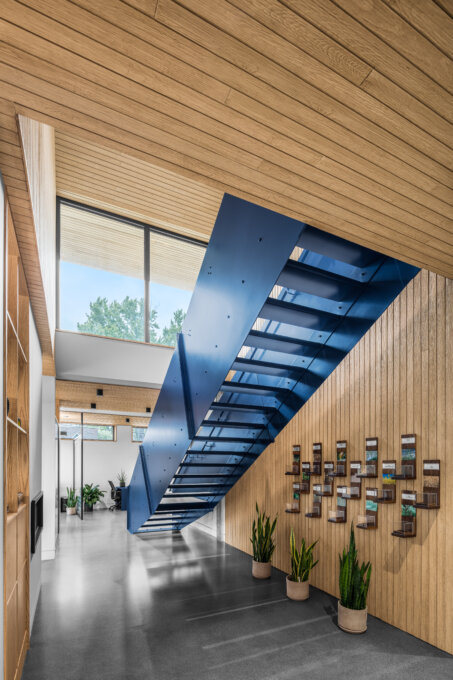
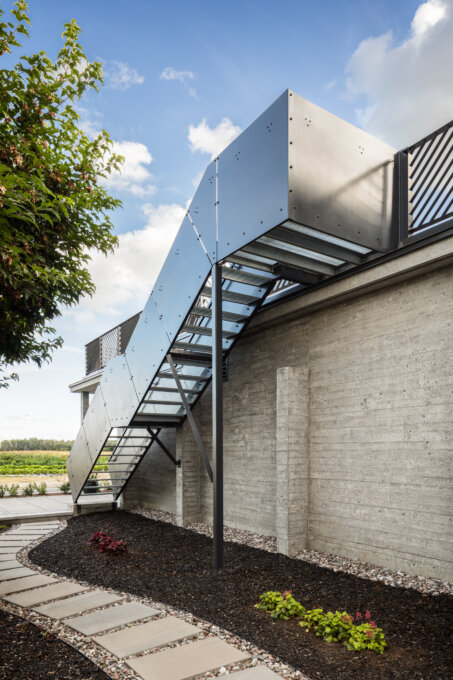
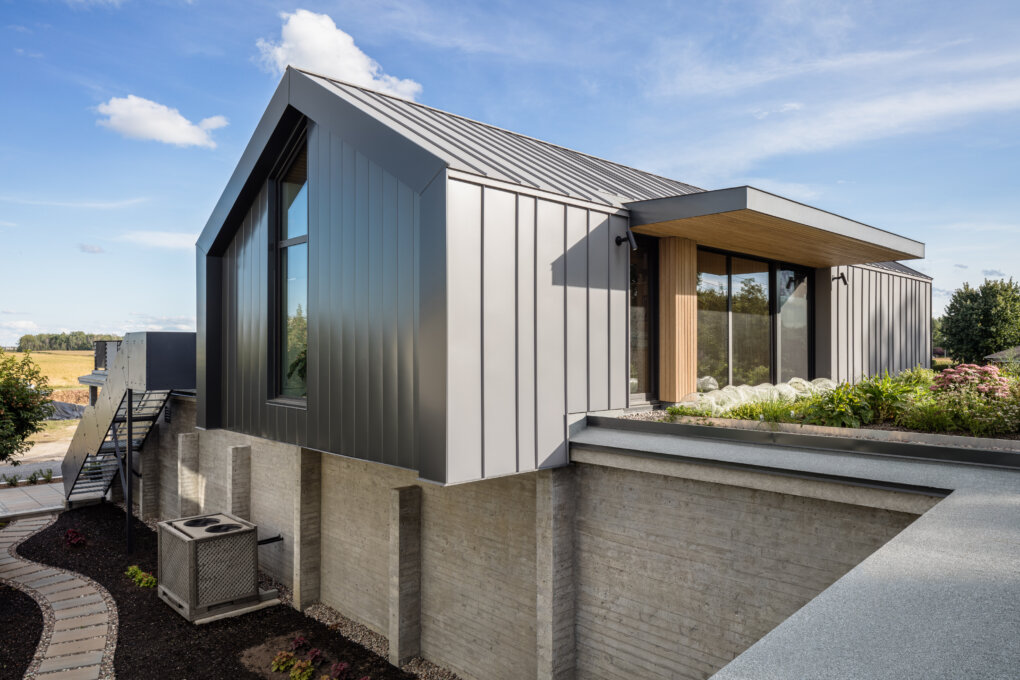
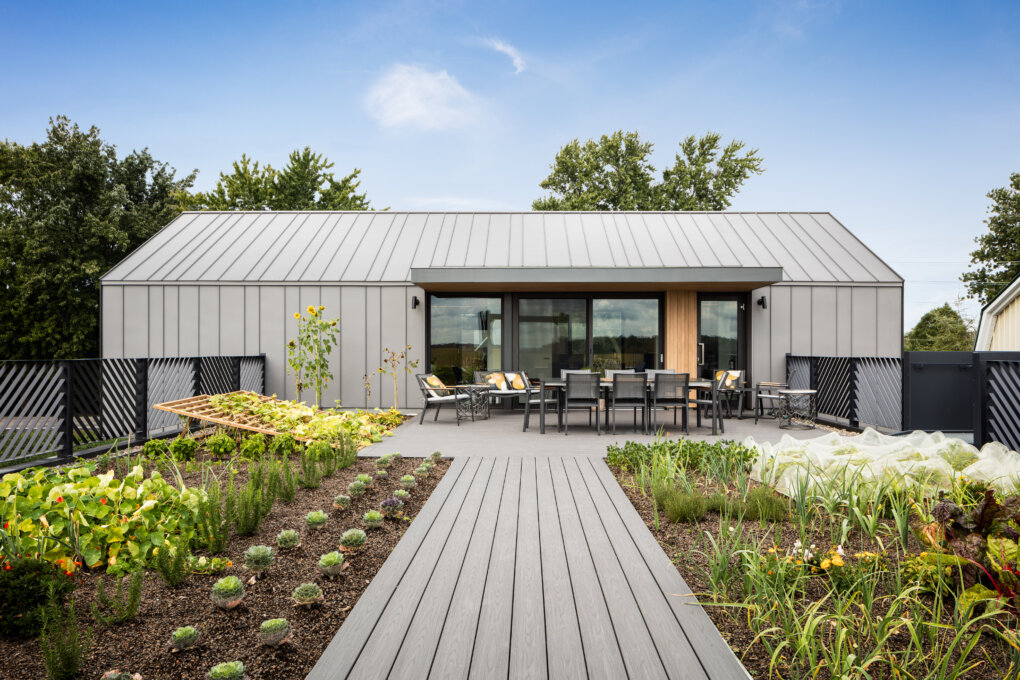
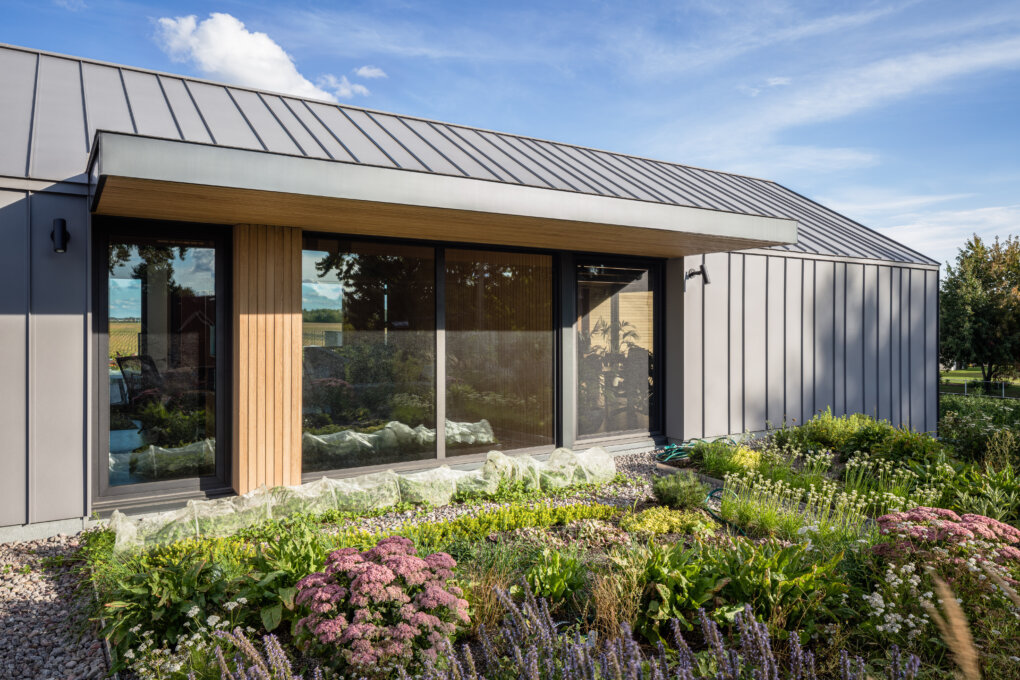
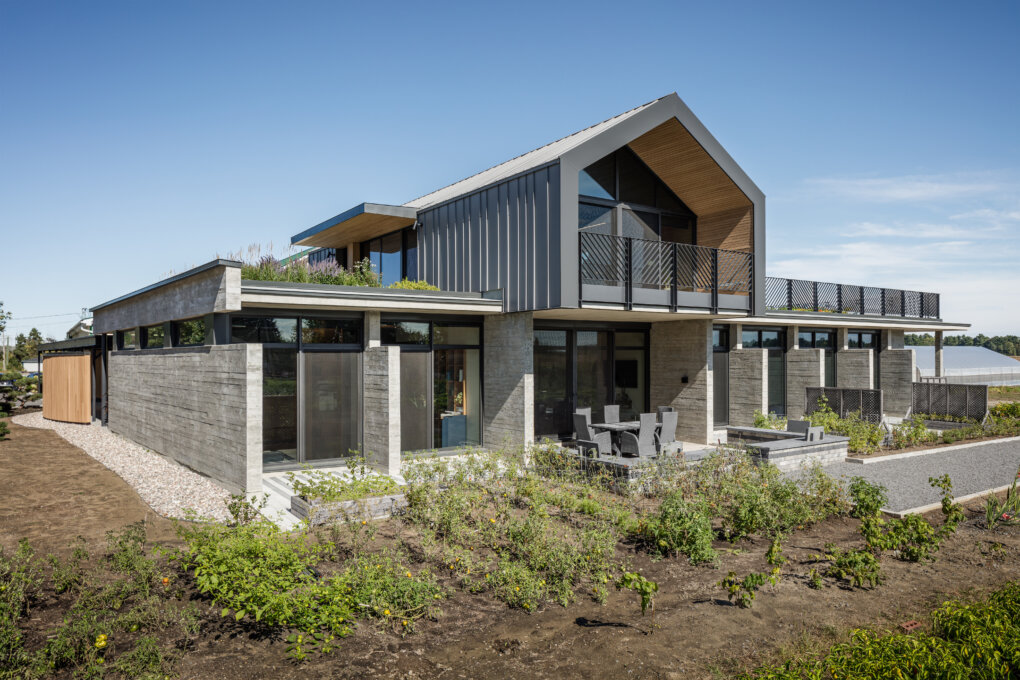
Share to
les Récoltes
By : Thellend Fortin Architectes
GRANDS PRIX DU DESIGN – 15th edition
Discipline : Architecture
Categories : Commercial Building / Mixed-Use Building : Gold Certification
Categories : Commercial Building / Low-Rise Office Building (< 5 storeys) : Silver Certification
Categories : Commercial Building / Factory & Warehouse : Gold Certification
Categories : Special Award / Architecture + Concrete : Bronze Certification
Categories : Special Award / Architecture + Wood : Gold Certification
Categories : Special Award / Architecture + Colour : Silver Certification
Categories : Special Award / Architecture + Stairs
Categories : Special Award / Architecture + Landscape : Platinum Winner, Gold Certification
Categories : Special Award / Sustainable Architecture : Gold Certification
The Récoles project involves the expansion of a multi-use building located on farmland in the town of L’Assomption. The building’s design concept is rooted in the idea of working the land, from seed to harvest.
Set within a large agricultural area, the expansion project was carried out on cultivated land alongside existing, contrasting buildings. As the farm has evolved and modern farming has become more complex, the needs of the farm owner and his associates have also shifted – a new work environment was necessary. The expansion focuses on administrative use of the building, but also includes an operational component with a commercial kitchen and a green roof.
The building’s expansion allowed us to reinterpret the agricultural typology on cultivated land in the Vallée du Saint-Laurent. The main farm building on the property features mansard metal roofs with standing seams. The project takes this simple yet defining silhouette and applies it to a simple second-floor volume with a gabled roof. The volume is aligned with the original ridge and rests on a concrete support.
This perfect alignment serves as a link between past and present, and a new metal roof in a brushed zinc colour integrates the building into the site as a whole, a call-back to the same palette as the farm buildings’ original sheet metal.
The expansion plan was developed around a series of parallel lines organizing the spaces. These simple lines are reflected in the board-formed concrete walls and anchor all of the design elements. The walls act as built-in furniture: workspaces, bookshelves, etc. Above, a series of wooden ceiling slats follow the same rhythm, interrupted by strips of gypsum, as does the lighting. Each component of the expanded interior spaces draws on this linear framework.
The ground floor, built of board-formed concrete, draws more parallel lines, digging down into the soil in rows. This linear geometry takes cues from the equipment used to till the soil. A repetition of perpendicular walls, also in board-formed concrete, organizes the building into separate work areas for multidisciplinary teams.
The use of concrete on the site gives a sense of strength and solidity, which reinforces the physical work done on the land. With a nod to farm vernacular, hemlock planks added to the formwork have impressed the grain of the wood onto the concrete, recalling the use of hemlock in traditional farm buildings.
A simple volume with a gabled roof and expansive windows extends over a concrete support and opens on either side onto rooftop vegetable gardens, its silhouette and form mirroring that of an adjacent barn. This construction has been perfectly integrated with the farm’s existing buildings, and it offers the team a view out onto the fruits of their labour.



